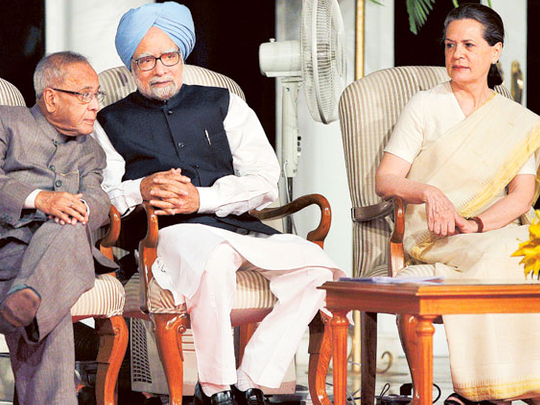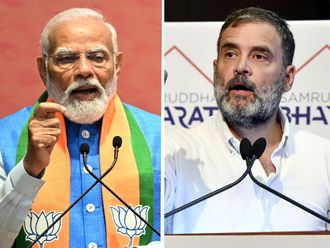
New Delhi: Ruling Untied Progressive Alliance (UPA) nominee Pranab Mukherjee is the hot favourite to get elected as the new President of India.
Polling to elect the 13th President of the Republic will be held Thursday in the Parliament House and all state assemblies. The nation, however, will have to wait until Sunday, when counting of votes will be taken up to know the outcome.
Mukherjee, who quit as the federal finance minister last month after his nomination to run for the top constitutional post of the country, is directly pitted against former colleague Purno A Sangma who is being sponsored by a fractured opposition.
All 776 elected members of the Parliament and 4,120 state lawmakers constitute the Electoral College which has a combined vote value of 1,097,000 votes.
The newly-elected President would be sworn-in on July 25 by the Chief Justice of India S.H. Kapadia to coincide with the retirement of the first ever woman President Pratibha Patil.
With both the ruling coalition and the opposition lacking in numbers, the presidential election was expected to be close. However, political manoeuvres have made the contest pretty lopsided in favour of Mukherjee who is assured of 60.57 per cent votes, roughly totalling to nearly 735,000 votes, enough to make him the first Bengali to become the President of India.
Presidential election, which is held once every five years, virtually divided the two main opposition groups, the National Democratic Alliance (NDA) and the Left Front. While two NDA constituents, namely the Janata Dal (United) and the Shiv Sena, have announced their supports to Mukherjee, the four-party Left Front is dived vertically. While the Communist Party of India-Marxist (CPM) and Forward Bloc, which together have 3.7 per cent votes, are supporting Mukherjee, the Communist Party of India (CPI) and the Revolutionary Socialist Party with 1.1 per cent combine votes will abstain from voting.
The UPA too was on the verge of getting split as Sangma was a senior leader of the UPA constituent Nationalist Congress Party (NCP). Since NCP refused to endorse his bid to become the first tribal President of India, Sangma quit the party and his candidature is being sponsored by the divided NDA and the Biju Janata Dal and the All India Anna Dravida Munnetra Kazhagam (AIADMK), the ruling parties of Odisha and Tamil Nadu respectively.
UPA survived another scare when one of its constituents, the Trinamool Congress, onTuesday announced its support for Mukherjee after keeping the ruling coalition on tenterhooks for close to a month.
Since parties cannot issue whip in presidential election, Sangma, who is assured of only approximately 313,000 votes is now depending upon conscience vote to achieve his fading dream, hoping tribal lawmakers cutting across party lines will stand behind him.
UPA demonstrated its strength at a lunch hosted by the Congress party chief Sonia Gandhi, who is also the UPA chairperson, on Tuesday (Tuesday) at a five-star hotel. All UPA constituents and top leaders of friendly parties like the Samajwadi Party, Bahujan Samaj Party, Rashtriya Janata Dal and Lok Janshakti Party were present at the lunch.
The West Bengal chief minister Mamata Banerjee, who is also the Trinamool Congress president, however did not turn up for the lunch although Sonia had called her up personally soon after she announced her support for Mukherjee. Instead she nominated two of her party lawmakers belonging to the Rajya Sabha to attend the lunch on her behalf.












